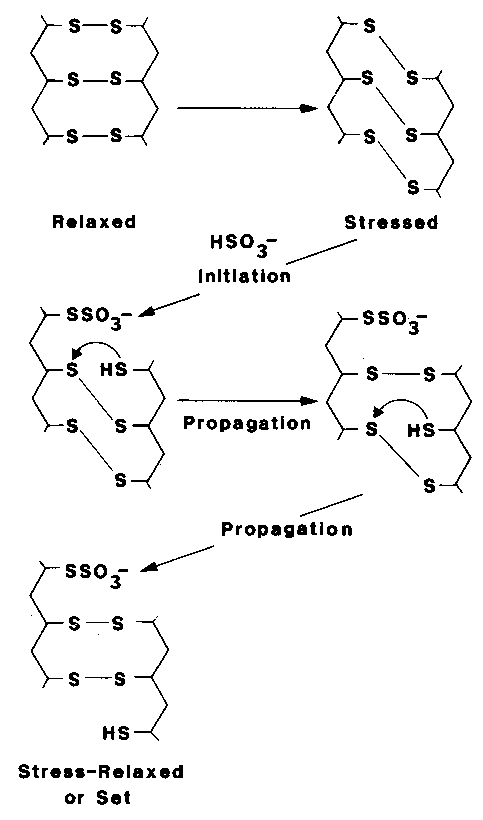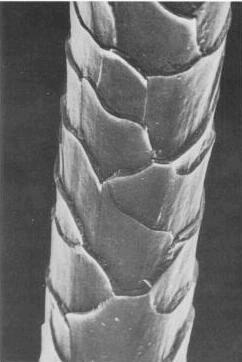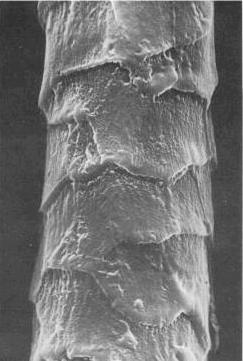


Chapter 5
I 1788 - State Of The Art In Textile Technology
II Australian Textiles - The Early Days
III Australian Textiles - The 20th Century
i Technology and Development
ii Australian Wool Textile Research
IV Australian Textiles - To Date
V Acknowledgements
References
Index
Search
Help
Contact us


(b) Scanning electron photomicrograph of a wool fivre after coating with Hercosett 57. The scales on the surface of the fibre are masked by the resin, which swells in water preventing preferential fibre movement and hence shrinkage.


 |
Australian Academy of Technological Sciences and Engineering |  |
© 1988 Print Edition pages 281 - 282, Online Edition 2000
Published by Australian Science and Technology Heritage Centre, using the Web Academic Resource Publisher
http://www.austehc.unimelb.edu.au/tia/289_image.html